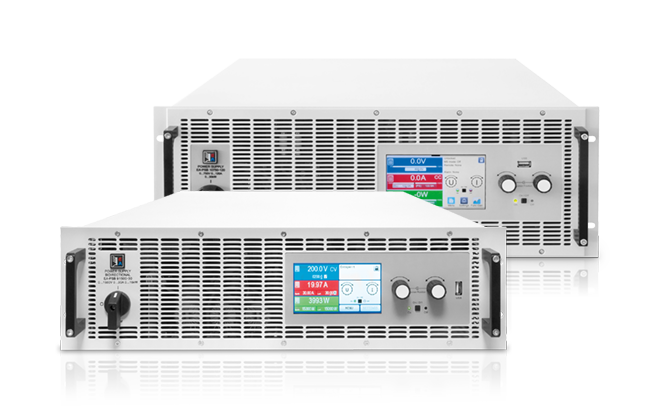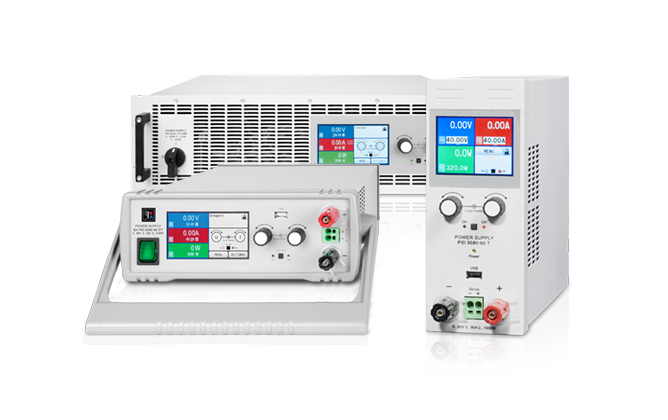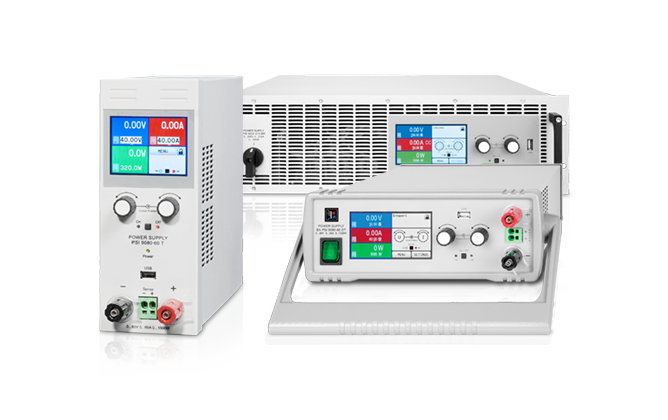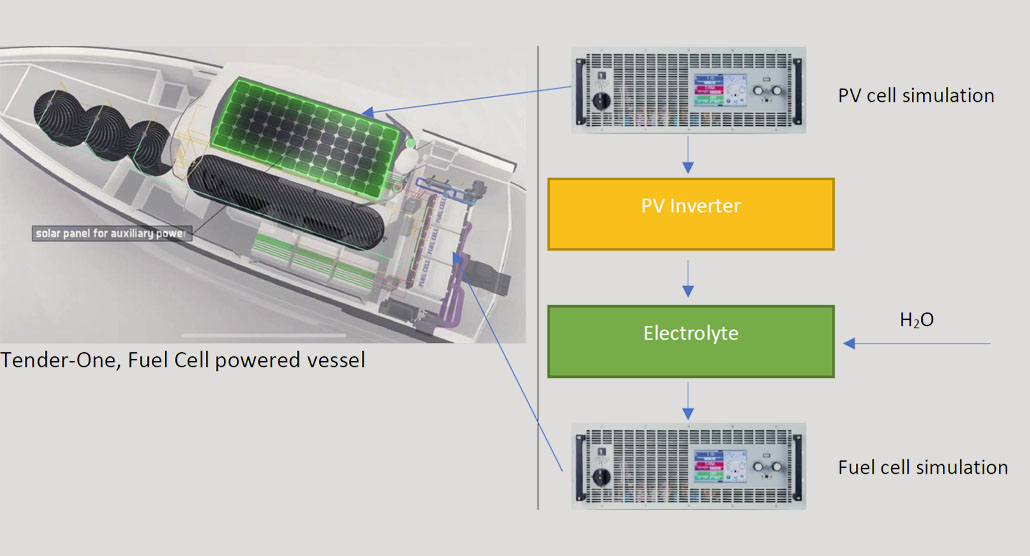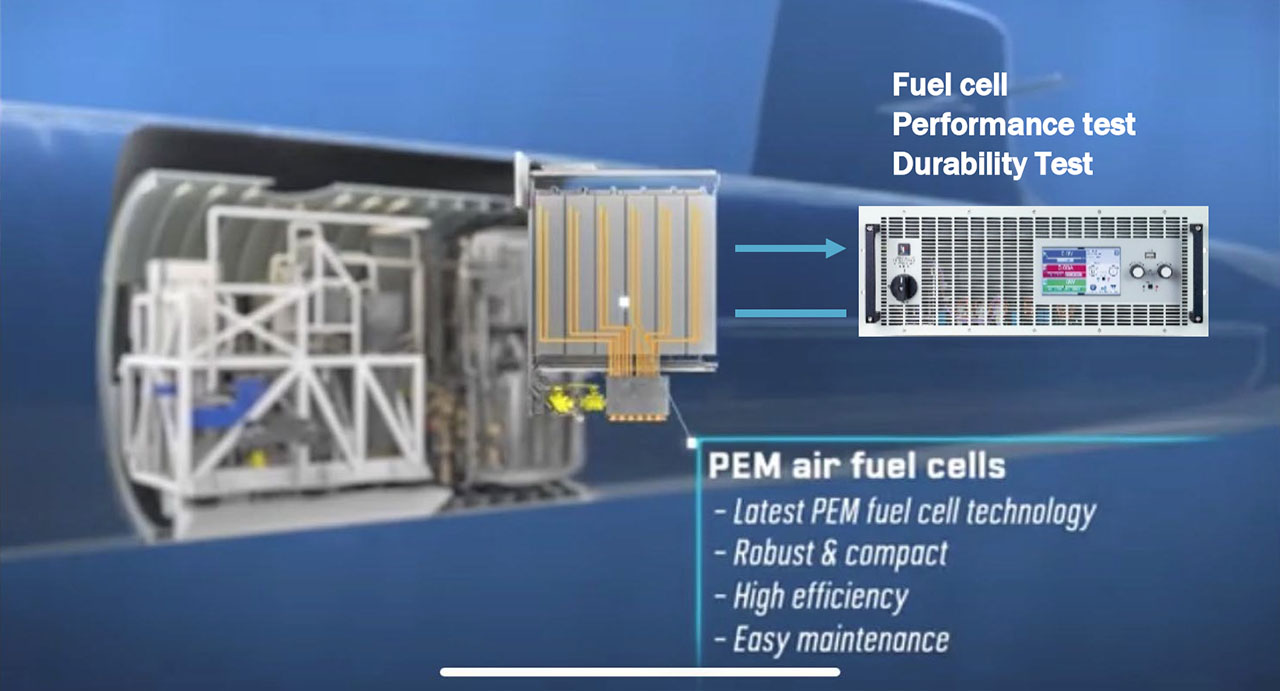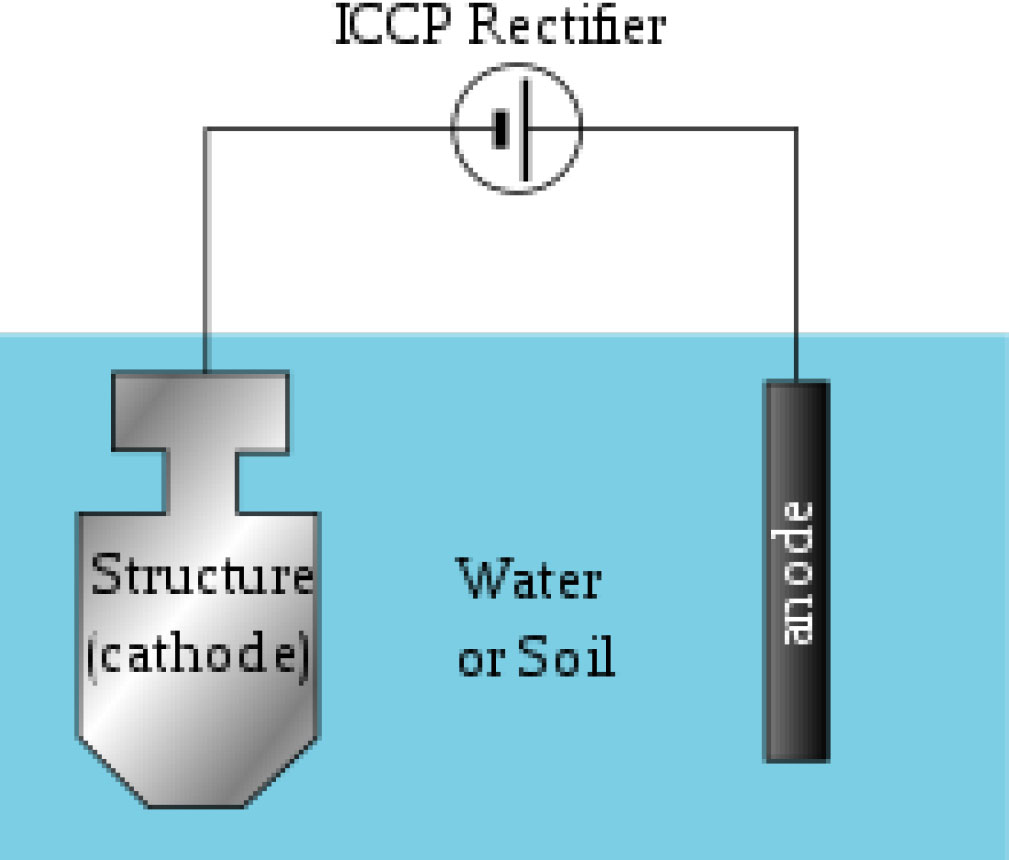Marine Electronics
Test even faster now
The primary electric power system of ships has been based on the alternating current (AC) system for a long time. However, marine engineers, similar to avionic engineers, have started to question the efficiency of the AC on-board grid system, which was previously taken for granted and have attempted to find a more efficient and eco-friendly electric power distribution system. Following this trend born in electric (automotive) vehicle industries, such as Battery and Fuel Cell operated cars, the marine industry is adopting the direct current (DC) system for the electric distribution system and power train in ships in combination with the AC on-board grid.
Returning the power – Regenerative Power Supplies & Sources
As manufacturers of all types of mechanical equipment work toward using energy efficiently, regenerative power technology has taken a major role in reducing operating costs. Power regeneration is the process of recovering kinetic energy created by a motor when stopping or braking, and then converting that energy to electricity and feeding it back into the power grid. Hybrid and electric vehicles are the first examples that typically come to mind, but other applications that involve frequent stopping and starting—such as hoists, cranes, elevators, spindle drives, and decanter centrifuges—can also put significant energy to recycled use.
This is equally true in electronic test. With energy efficiency at a premium for those performing high-power tests, power supply customers must factor in a product’s lifetime operational costs, which often exceed initial capital investment. Today, vendors of regenerative power supplies and sources market not only their solutions’ low cost of ownership, but many newer solutions also feature lower floor or rack space usage, low heat dissipation, and minimal required maintenance.
EA’s regenerative bidirectional supplies are uniquely suited for the marine industry with respect to power controlling systems for photovoltaics inverters and backup batteries, as well as for submarine battery test for hybrid controls.
Products Used in Marine & Offshore
Application Solutions
Electric Propulsion
Ships transport about 80 percent of the world’s commodities, according to the United Nations Conference on Trade and Development. And transportation across the oceans will continue to rise in the coming years – by 3.8 percent per annum by 2022. However, ships produce a huge amount of exhaust gases, such as sulfur oxides, nitrogen oxides, soot particles and fine dust, as well as carbon dioxide (CO2). Most container and cruise ships, oil tankers, and cargo vessels run on heavy diesel oil. And they consume enormous amounts: Together, the 90,000 ships worldwide burn 370 million tons of fuel each year – and produce 20 million tons of sulfur oxide. Therefore, electrification is needed to remove these heavy pollutants from the shipping industry and is the path forward.
Three main streams of electrification of ships:
- Diesel-electric drive: Diesel generators generate the electricity. The electricity then drives the electric engine, which moves the ship’s propeller.
- Hybrid drive: Batteries are on board in addition to the internal combustion engine. On the one hand, they can be switched on additionally for a short time when a power peak is needed. On the other hand, they can store surplus energy, such as from the diesel generator. This would allow the ship to sail using nothing but electricity for some time.
- Fully electric drive: There is no internal combustion engine on board, all the energy comes from batteries.
Reference: Infineon
EA Advantages:
- Output voltage up to 2000V
- Power output up to 30 kW
- Paralleling up to 2MW
- High power Density
Kathodic Corrosion Protection
The Cathodic Corrosion Protection in marine vessels is also powered by programmable DC power supplies to prevent the ship’s steel body degradation. Cathodic protection on ships is often implemented by galvanic anodes attached to the hull and ICCP for larger vessels. Since ships are regularly removed from the water for inspections and maintenance, it is a simple task to replace the galvanic anodes. Galvanic anodes are generally shaped to reduced drag in the water and fitted flush to the hull to also try to minimize drag. Smaller vessels, with non-metallic hulls, such as yachts, are equipped with galvanic anodes to protect areas such as outboard motors. As with all galvanic cathodic protection, this application relies on a solid electrical connection between the anode and the item to be protected.
For ICCP on ships, the anodes are usually constructed of a relatively inert material such as platinised titanium. A DC power supply is provided within the ship and the anodes mounted on the outside of the hull. The anode cables are introduced into the ship via a compression seal fitting and routed to the DC power source. The negative cable from the power supply is simply attached to the hull to complete the circuit. Ship ICCP anodes are flush-mounted, minimizing the effects of drag on the ship, and located a minimum 5 ft below the light load line in an area to avoid mechanical damage.
The current density required for protection is a function of velocity and considered when selecting the current capacity and location of anode placement on the hull. Some ships may require specialist treatment, for example aluminium hulls with steel fixtures will create an electrochemical cell where the aluminium hull can act as a galvanic anode and corrosion is enhanced. In cases like this, aluminium or zinc galvanic anodes can be used to offset the potential difference between the aluminium hull and the steel fixture. If the steel fixtures are large, several galvanic anodes may be required, or even a small ICCP system.
Reference: Wikipedia
EA Advantages:
- Output voltage up to 2000V
- Power output up to 30 kW
- Paralleling up to 2MW
Magnetic Silencing – Degaussing
A steel-hulled ship is like a huge floating magnet with a large magnetic field surrounding it. As the ship moves through the water, this field also moves and adds to or subtracts from the Earth’s magnetic field. Because of its distortion effects on the Earth’s magnetic field, the ship can act as a trigger device for magnetic sensitive ordnance or devices which are designed to detect these distortions. The degaussing system is installed aboard ship to reduce the ship’s effect on the Earth’s magnetic field. To accomplish this, the change in the Earth’s field about the ship’s hull is “canceled” by controlling the electric current flowing through degaussing coils wound in specific locations within the hull. This, in turn, reduces the possibility of detection by these magnetic sensitive ordnance or devices.
EA Advantages:
- Output voltage up to 2000V
- Power output up to 30 kW
- Paralleling up to 2MW
- High power Density
Below illustrates a common technique by activating the coil in order to compensate the induced and permanent vertical components of the ship magnetic field (Z zone). As the ship changes hemispheres, the coil current polarity must be dynamically adjusted.
Reference: Federation of American Scientist
Sea Mine – Tracing Vessel’s Magnetic Signature
Modern mines affect ocean detecting magnetic interference of a vessel in the earth’s magnetic field, this is called the ships magnetic signature. This signature is the main influence of those used to trigger the sea mine or torpedo. If the signature is detected and analyzed then the vessel is identified and the magnetic signal becomes a trigger for torpedo or mining explosion and gives a position and categorization (mainly submarine). To minimize this threat, the vessel is equipped with a built-in Degaussing System (DG). DG reduces the signature with a counter acting field generated from a gaming system connected to the loop coil power amplifier.
Reference: Polyamp: Degaussing Systems
EA Advantages:
- Output voltage up to 2000V
- Power output up to 30 kW
- Paralleling up to 2MW
- High power Density
Electrified Submarine
Siemens Marine’s polymer electrolyte membrane (PEM) fuel cells are the wave of the future for external air-independent electric energy generation in submarines. As the cells need only hydrogen and oxygen as fuel, dive periods can be significantly extended. This makes submarines equipped with these low temperature fuel cells far superior to conventional submarines, which must surface fairly frequently to recharge their batteries. These new designs are much more efficient and emit no exhaust whatsoever. Thanks to their electrochemical mechanism of action, which creates only water and heat in addition to electricity, the PEM fuel cell creates zero noise. Its robust, low-signature and nonmagnetic design was specially created for long-term use and has an expected service life of many years – and all in an effective and affordable life cycle support package.
Reference: Siemens
EA Advantages:
- Output voltage up to 2000V
- Power output up to 30 kW
- Paralleling up to 2MW
Marine
Marine cathodic protection covers many areas, jetties, harbors, offshore structures. The variety of different types of structure leads to a variety of systems to provide protection. Galvanic anodes are favored, but ICCP can also often be used. Because of the wide variety of structure geometry, composition, and architecture, specialized firms are often required to engineer structure-specific cathodic protection systems. Sometimes marine structures require retroactive modification to be effectively protected.
Reference: Wikipedia
EA Advantages:
- Output voltage up to 2000V
- Power output up to 30 kW
- Paralleling up to 2MW

